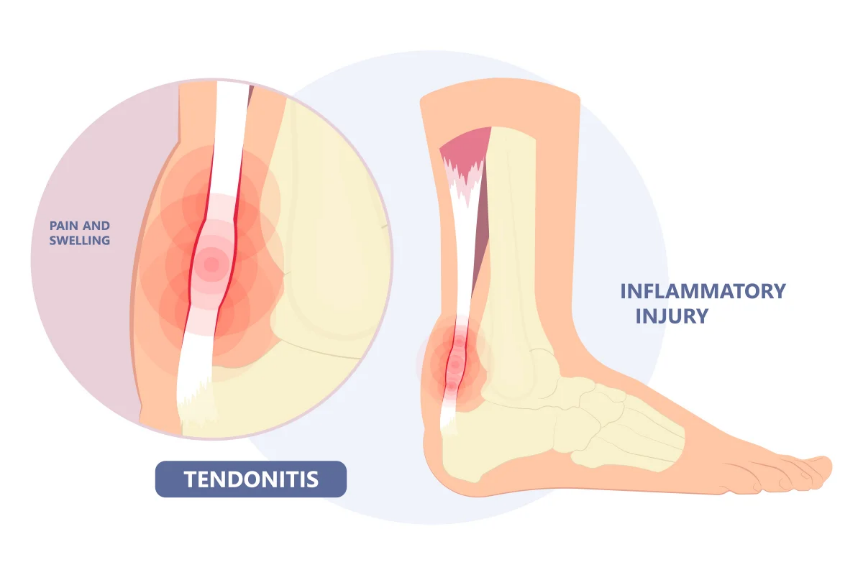ADVANCED BONE & JOINTS HEALTH CENTRE
NOVEMBER 2025
Types of Achilles Tendon Injuries & How to Treat Them
|
The Achilles tendon connects your calf muscles to your heel bone and is the largest, strongest tendon in your body. It plays a crucial role in walking, running, and jumping. However, due to Malaysia’s active lifestyle and the popularity of sports like badminton, futsal, and running, Achilles tendon injuries are quite common. Let’s explore the different types of injuries and how to manage them effectively.

Tendonitis
Achilles tendonitis is usually caused by overuse or repetitive stress to the tendon. It leads to pain and stiffness along the back of the leg or near the heel. In most cases, nonsurgical treatments are effective. Resting and avoiding strenuous activities are vital steps in recovery. Applying ice and using anti-inflammatory medication can also help reduce pain and swelling.

Rupture
An Achilles tendon rupture occurs when the tendon partially or completely tears. This often happens during sudden movements that cause the tendon to overstretch. It is a common sports injury, particularly among individuals aged 30 to 40. A rupture can be identified by a sharp pain or a popping sound at the back of the ankle. Unlike tendonitis, this injury requires immediate medical attention.
Common treatments include:
- Before seeing a specialist, follow the RICE method (rest, ice, compression, elevation) to reduce pain and swelling.
- Using a brace or walking boot helps immobilize the tendon, allowing it to heal properly.
- Surgery may be recommended for active individuals, where the torn tendon ends are stitched together and the leg is placed in a cast for recovery.
- Physical therapy plays a key role in restoring strength and mobility after the tendon has healed.
Achilles Tendinopathy

Achilles tendinopathy shares similar symptoms with tendonitis but is usually caused by long-term wear and tear that weakens the tendon’s structure. Managing this condition often involves a mix of home care and professional therapy. Rest, stretching, and strengthening exercises are essential for recovery. If your symptoms persist, it’s important to consult a specialist for further evaluation and a personalised treatment plan.
Advanced Bone Joint Specialist focuses on non-surgical treatments and advanced rehabilitation techniques to help patients recover from tendon and joint-related conditions. Our experienced physiotherapists and rehabilitation experts provide tailored therapy plans designed to restore mobility, reduce pain, and support long-term recovery. If you’re experiencing persistent discomfort or difficulty moving, contact Advanced Bone Joint Specialist today to book an appointment and start your journey toward better movement and a healthier lifestyle.
Start Your Recovery with a Free Consultation
Get expert advice from our bone and joint specialists no commitment, just care.
